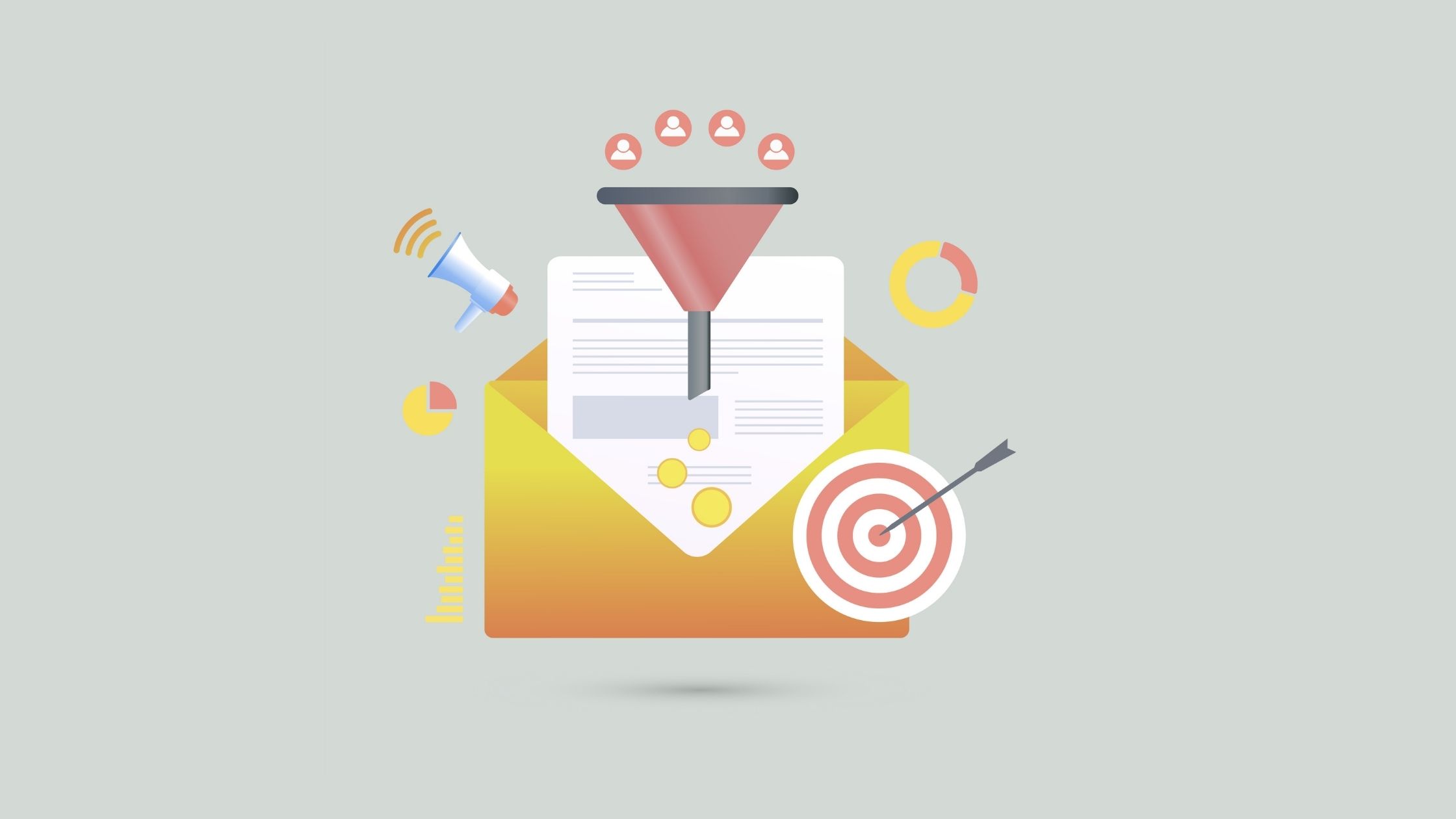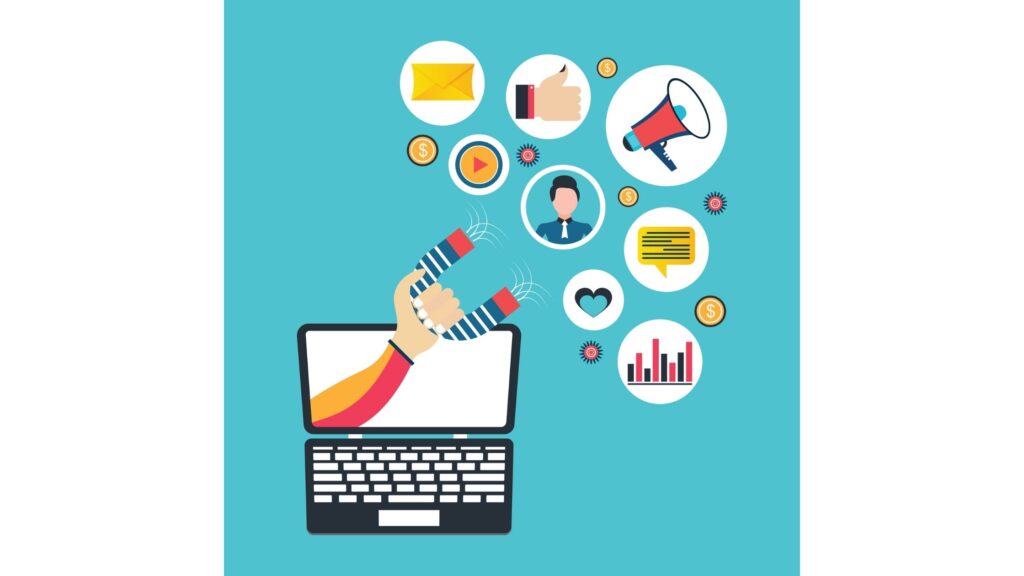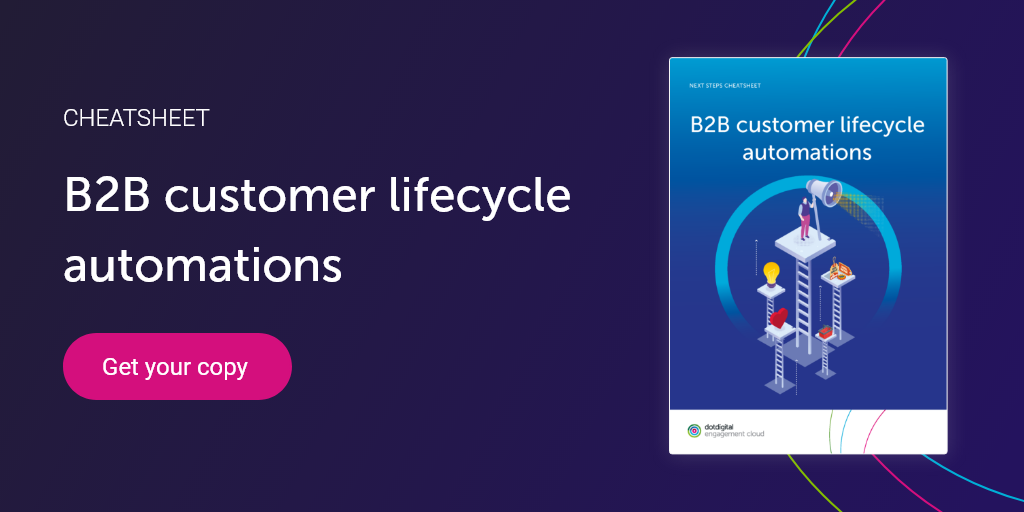B2B marketing: 5 email campaigns that generate stronger leads


B2B marketers are well aware of the benefits of email marketing. The real problem lies with the barrage of emails landing in inboxes every day. How do you ensure your email campaigns generate the strongest leads possible?
Lead generation for B2B marketers
Lead generation is fundamental to the success of B2B brands. It helps you identify the ideal customers for your products or services, then attract them and drive them to buy. It’s an essential activity that unites B2B sales and marketing teams as they work towards their single goal.
The first stage of lead generation involves collecting data on your potential customers. This information could include name, email, company name, job title, sector, and more. This will help you get to know your prospects and enable you to send increasingly personalized marketing as your relationship develops.
After you’ve collected this data, you need to nurture these leads to get them into a place where they’re ready to convert. This generally involved using marketing automation to warm leads until they’re ready to be passed to your sales team.
The ultimate goal of lead generation is to create a consistent pipeline of high-quality prospects ready to convert into customers.

5 email marketing campaigns that generate strong leads
To ensure you’re only qualifying the highest quality leads, you need to be running campaigns that engage prospects.
Email marketing for B2B brands is the strongest channel in your toolkit. Omnichannel marketing automation platforms empower B2B marketers with greater insights into customer data. With this, you’ll be able to deliver personalized, targeted content in your email marketing campaigns.
Your strategy and tactics will vary significantly depending on your industry and product or service offering. Think of the campaigns below as your list of ingredients, it’s up to you to decide how to put the recipe together but we’ve selected those guaranteed to engage audiences to produce stronger leads.
1. Welcome series
Your welcome series is one of the most important automation campaigns you can send.
It’s your first chance to really introduce yourself to a new prospect. In a welcome series, you should be introducing your brand, outlining your value proposition, and setting clear expectations for your readers.
By doing this, you’re demonstrating your brand’s integrity. You’re being open and honest from your very first interaction and this will establish a strong relationship right from the very beginning.
You’re also contacting leads at the time when they are most engaged with your brand. Welcome emails enjoy a significantly higher open rate because they arrive in subscribers’ inboxes at the point of sign-up. Therefore, they’re actively engaged and looking forward to your emails.
Prospects who receive a welcome email will experience significantly higher levels of engagement with your brand, simply by starting it off right.
2. Activation emails
Once you’ve engaged your new prospects with your welcome series, the natural next step is your activation series. This helps new customers learn about your products or services while allowing you to get to know them.
You should use your activation series as a way to get to know new leads. As well as introducing your brand offering, you should use this series to learn about their interests and needs. Gathering preferences is essential.
Marketing preferences will be critical to creating stronger leads. Collecting them will enable you to send personalized marketing. The more you’re able to deliver targeted and relevant content related to the prospect’s journey, the more they’ll view your brand as one that will consistently meet their needs.
3. Lead nurturing
As B2B marketers, you know the importance of lead nurturing. On average, nurtured leads create 20% more sales opportunities than non-nurtured leads. But nurturing leads is often a labor-intensive tactic. It requires knowledge and understanding of your potential customers.
And that’s exactly where your omnichannel marketing automation platform comes into play. By combining marketing preferences with lead scoring, you can create a clear, well-rounded picture of your customers, their interests, and their needs. This is all you need to build a powerful lead nurture automation program.
Prospects expect and interact with different types of content at different stages of their journey. Lead scoring can help you understand where your leads are and trigger specific campaigns as they progress through your customer lifecycle. Armed with an understanding of what they’re looking for from your brand, you can ensure you’re delivering rich, nurturing content guaranteed to drive them towards conversion.
4. ABM
The key to successful account-based marketing (ABM) lies in your curated content. You need to deliver content that appeals directly to the accounts you’re targeting.
When putting together your ABM strategy, you should group prospects based on their shared traits. For example, you may decide to target 50 brands that deliver catering services. This will make it easier for you to deliver curated content designed to address their specific pain points and demonstrate the value your brand can offer.
ABM campaigns are strong converters as they engage prospects on an unprecedented one-to-one scale. Not only are you demonstrating your understanding of their needs, but you’re also providing clear solutions to their problems.
5. Loyalty program
Modern customers want their relationships with brands to be two-way streets. If they’re going to do business with you, they want to know what they’re getting out of it.
Of course, you’re already demonstrating this through your personalized and targeted lead nurturing campaigns. Potential customers know you will be providing them with an excellent service solving their specific pain points. But they will be strong, more loyal customers if they see your brand going over and above to satisfy them.
Thankfully, achieving this is easier than it sounds. A loyalty program is a surefire way to win over prospects. Rewarding content downloads, social posts, and referrals are great ways to turn a prospect into a customer, and a customer into a brand advocate.
Taking your next steps in B2B marketing
Now you’ve been inspired by some powerful marketing automation campaigns to generate stronger leads. Next, you need to think about how you’re going to drive these prospects to convert and how to keep them as long-term clients.
By diving into the modern customer’s lifecycle, you can automate every stage of the journey to save yourself time and make money. Check out our latest B2B marketing cheatsheet to discover how.



